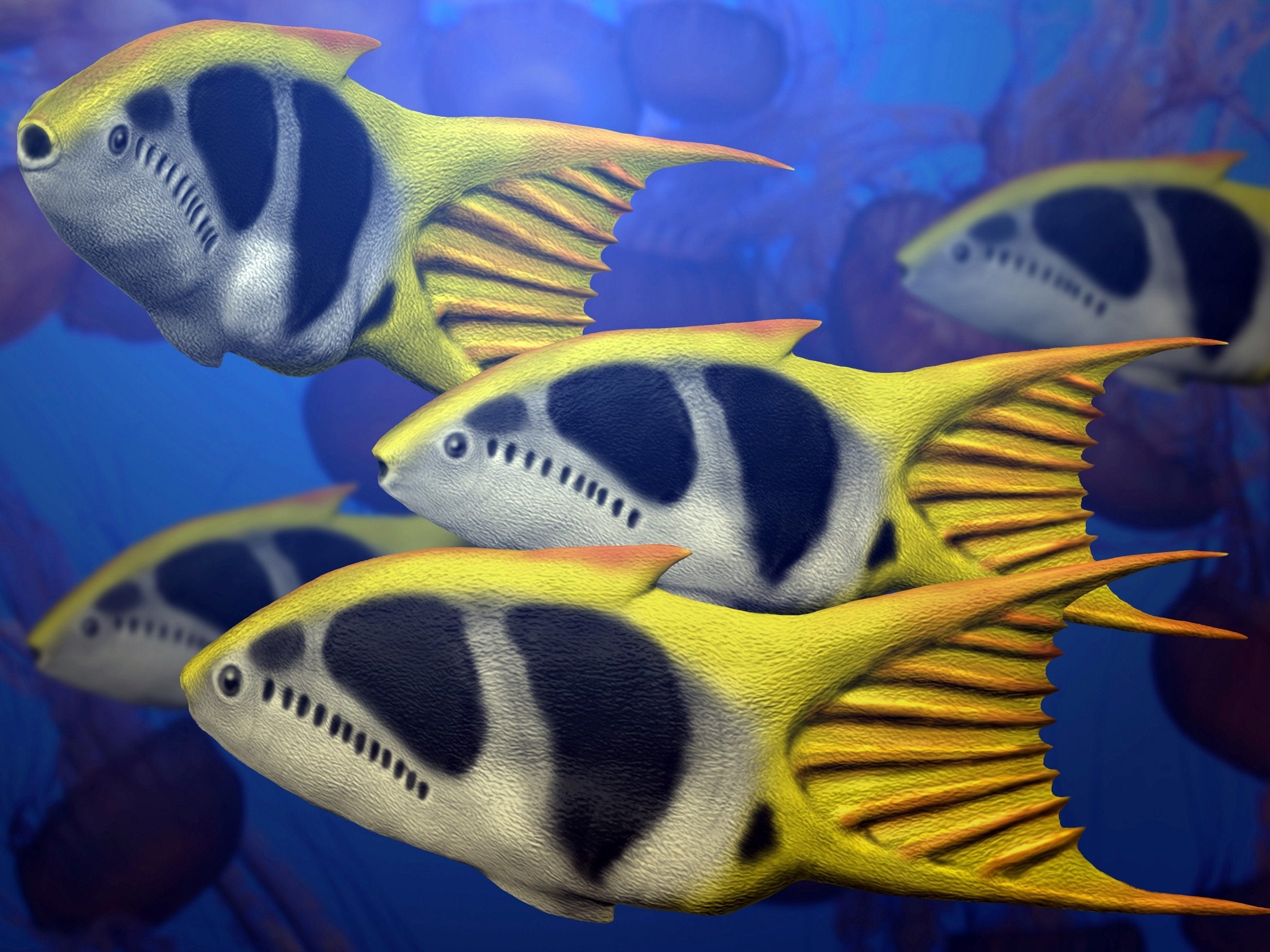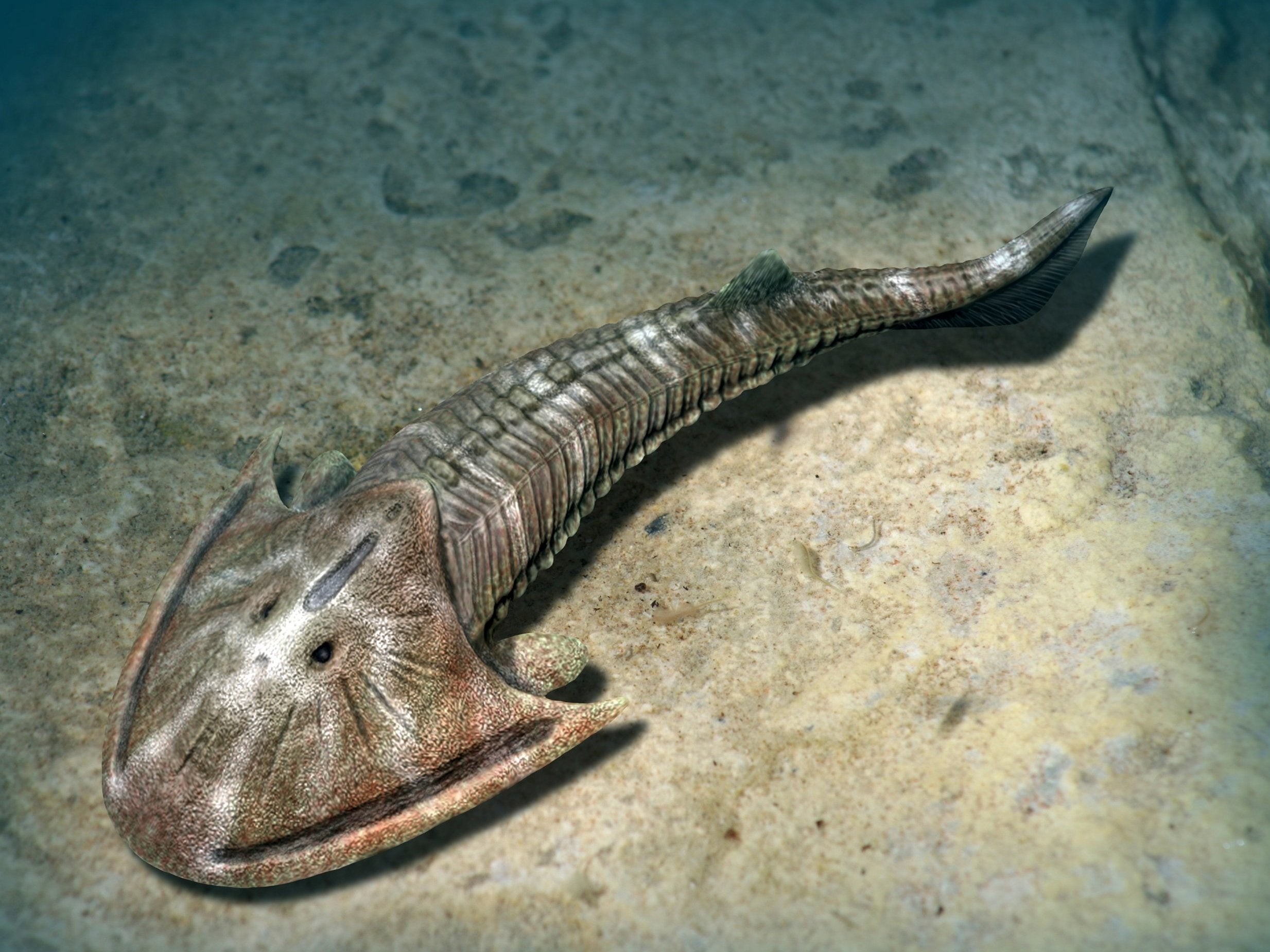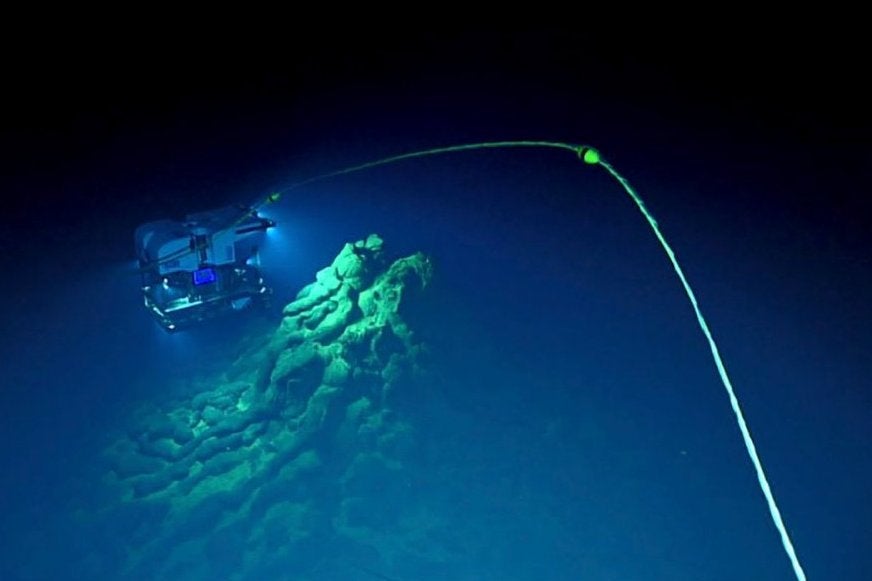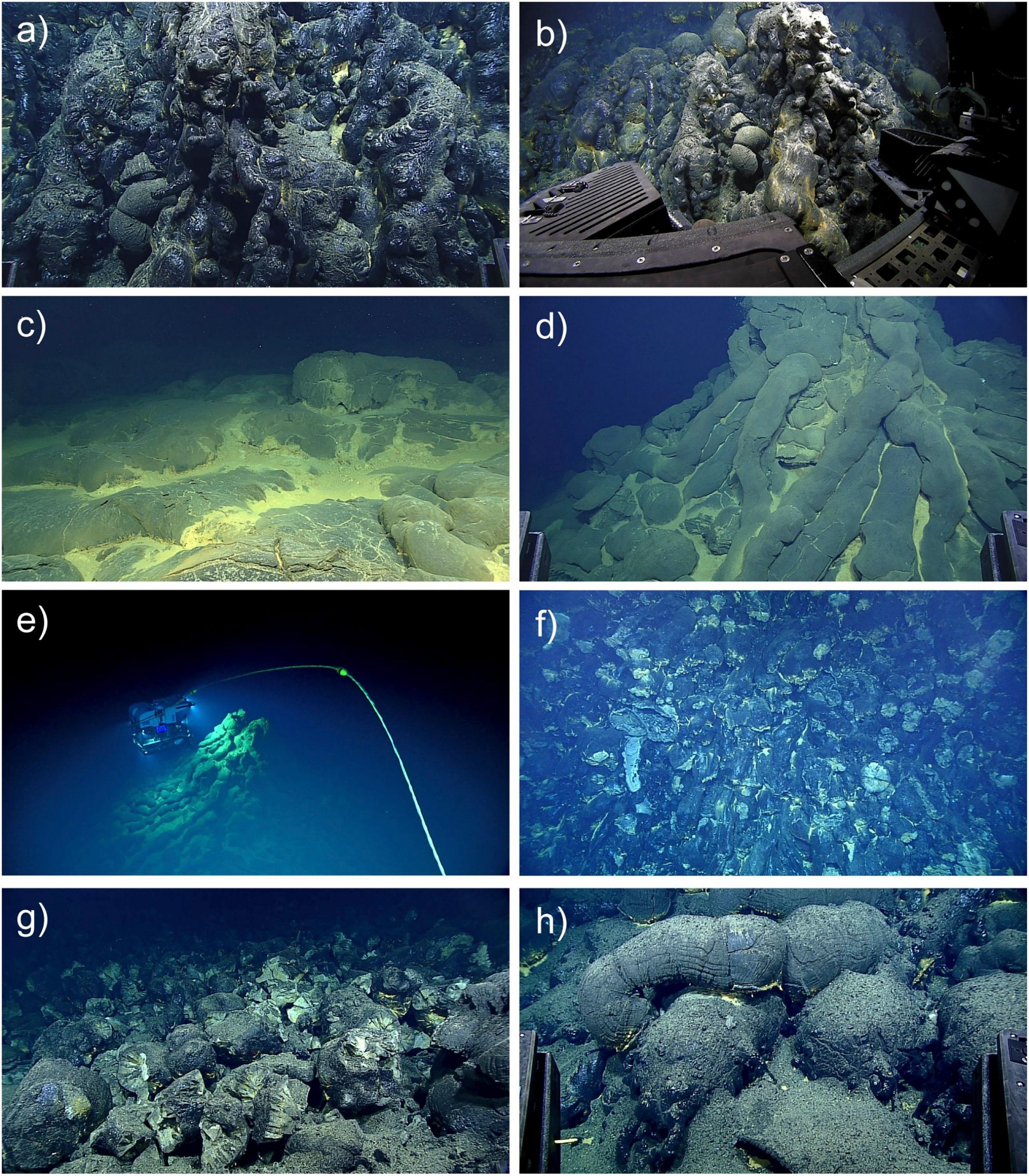Science news in brief: the genes in deer antlers and a volcanic eruption on Mars
And a roundup of other stories from around the world

Where did fish first evolve? The answer may be shallow
More than 400 million years ago, ancient oceans were teeming with many fish that might seem alien in today’s seas.
Back then some wore plates of bony armour and lacked jaws, such as the arandaspis, which looked like a clam with a tail. The heterostracans sometimes resembled underwater armadillos with spikes. There were also galeaspids, some of which sported swordlike helmets, and the osteostracans, which had horseshoe-shaped heads.
Not all jawless fish were heavily armoured. The thelodonts, for example, had torpedo-shaped bodies and bony scales that looked like shark skin. Some anaspids had scales and a leaf-shaped body.
Scientists have long wondered where in the sea these extinct fish groups and their living relatives first evolved. Was it the open ocean? Perhaps on coral reefs? Or maybe in the depths of the abyss?
Now, a new study suggests that fish first swam in the shallows around the coasts of supercontinents before they diversified and conquered the world’s waters. The findings, which were published recently in the journal Science, also provide insight into the origins of the vertebrates that became the forebears of our ancestors who first ventured onto land.
The researchers trawled through the scientific literature and created a database with more than 2,700 fossil records of jawed and jawless fish from every continent that stretched from 480 million to 360 million years ago. The database allowed the team to determine where in the ocean the ancient fish groups lived and evolved.

“All of the groups kept originating in the shallow water over the whole 100-million-year period, which was completely unexpected,” says Lauren Sallan, a palaeontologist at the University of Pennsylvania and lead author of the study. “This is an unexpected diversity hot spot that persists for a long time.”
The team is not exactly sure why fish evolved near the coast in clear, shallow lagoons and intertidal zones that were typically no deeper than about 100 feet. They think it may have to do with the waves, sea level changes, runoffs, rainfalls and other environmental factors of shallow water habitats.
“We’ve come to the suspicion that there’s something going on with water chemistry and potentially with oxygen levels in these active and dynamic environments,” says Ivan Sansom, a palaeobiologist from the University of Birmingham and an author on the paper.

Deer antlers couldn’t grow so fast without these genes
Every spring, male deer undertake a unique biological ritual: sprouting and rapidly regrowing their massive, spiky antlers.
A complex matrix of bone, living tissue and nerve endings, deer antlers can reach 50 inches long and weigh more than 9kg before they are shed in winter. Not only are the antlers useful in attracting mates and fighting, they qualify deer as the only mammal that can regrow lost body parts.
Now, researchers say they have identified the two genes primarily responsible for antler regeneration in one species, fallow deer. The study, reported recently in the Journal of Stem Cell Research and Therapy, notes that these genes are also found in humans, potentially opening new avenues of research into bone trauma and diseases.
“Deer antler formation shares similar biological mechanisms with human bone growth, but deer antlers grow much faster,” says Peter Yang, an orthopaedic researcher at the Stanford University School of Medicine and senior author of the study.
Perhaps by studying the newly identified genes in humans, scientists may be able to develop treatments that could “reproduce the rapid bone growth of deer antlers in human bone”, and provide relief for people who suffer ailments such as osteoporosis.
Yang and his colleagues travelled to a deer farm in California to take samples of early antler tissue — which consists primarily of stem cells — from male red deer. After analysing the genes in the samples, the researchers tried shutting down some and “revving up” others to determine which function they controlled. They compared samples of RNA — molecules that deliver messages in genes — from the antlers with human RNA in search of overlaps. They then tinkered with the relevant genes in mice to see how they affected tissue growth.
The team eventually narrowed their focus to two genes, uhrf1 and s100a10, both of which have previously been linked to bone development in humans. They found that when the uhrf1 gene was shut down, the rate of bone growth in the mice significantly slowed. And when the s100a10 gene was put into overdrive, calcium deposits increased and the engineered cells mineralised more rapidly.
Yang and his team concluded that uhrf1 and s100a10 work in tandem to generate rapid antler growth in deer: uhrf1 promotes tissue generation, and s100a10 supports the hardening, or mineralisation, of that tissue.

A vault of glass and the deepest volcanic eruption ever detected
In 2015, an international team of researchers sent robotic submersibles beneath the waves north of Guam. They had set out to study an area south and west of the Mariana Trench – the deepest groove in Earth’s oceans – and an arc of volcanoes, hoping to spy hidden hydrothermal vents.
Instead, they discovered a spectacular glassy labyrinth, nearly three miles below sea level. It was recently cooled lava, the product of the deepest underwater volcanic eruption ever recorded by scientists.

The researchers reported their discovery recently in Frontiers in Earth Science. The identification of deep-sea eruptions happens very rarely, says Bill Chadwick, a seafloor geologist at the NOAA Pacific Marine Environmental Laboratory in Oregon and lead author of the study, and discovering one “is an opportunity to learn about a fundamental Earth process that we know little about”.
The finding was not just notable for its extraordinary depth. The extremely young age of the lava deposit offers scientists a window into the very beginnings of what happens when a volcanic outburst occurs beneath the seas. So often, they just see an epilogue.
“Much of what we know about underwater eruptions, their hydrothermal systems and the biological communities that grow on them is gained from studying old, even ancient, volcanic systems,” says Rebecca Williams, a volcanologist at the University of Hull, who was not involved in the research.
About 80 per cent of Earth’s eruptions take place within the oceans. But their depth and remoteness makes finding these near-ubiquitous events difficult.
Chadwick’s team made the initial discovery using an autonomous vehicle named Sentry, which was built by the Woods Hole Oceanographic Institution. Back in 2015, it was perusing the seafloor near where the Pacific tectonic plate is sinking beneath the Philippine Sea plate. To the east, there is the Mariana Trench and an arc of about 60 underwater volcanic monuments.
To the west of this arc, the seafloor is slowly spreading. Here, in what is known as the Mariana back-arc, additional volcanic activity is possible – and this is where Sentry spotted the prolific lava flows.
Old lava flows were expected here, but what the researchers detected is the first known new eruption in the back-arc region. That makes this discovery enormously serendipitous, as eruptions here are only expected every few hundred years or so.

The wildebeest is one highly toned machine
This time of year, the temperature routinely reaches 40C in northern Botswana. The grasses recede, forcing herds of wildebeest to walk farther and farther from their only water source to graze. Humidity falls to about 10 to 15 per cent.
“It’s not quite Death Valley, but it’s not quite far off it,” says Alan Wilson, a biologist whose research examined how the wildebeests cope with such an inhospitable environment. “They’re on a physiological knife edge in terms of: how do they continue to survive?”
His research showed that these cow-like animals, also called gnus, have remarkable adaptations, enabling them to walk up to 50 miles over five days without drinking water. They can do this because their muscles work incredibly efficiently – far more than their body size would suggest.
“I don’t think we’d get to 50 miles,” Wilson says, referring to humans.
His study, published recently in the journal Nature, shows that this efficiency means wildebeests do not have to sweat or pant as much to release heat, even when they are running in heat higher than their body temperature.
“They don’t have the problem of overheating that they would have otherwise or having to use water to cool themselves,” says Andrew Biewener, an expert in the biomechanics at Harvard University who was not involved in the research.
Biewener says the study helps link muscle physiology and locomotion to the animals’ behaviour.
Wildebeests are like very skinny cows, says Wilson, professor of locomotor biomechanics at the Royal Veterinary College in London. “They’re a wee bit shorter than a cow and an awful lot lighter,” he adds. A typical cow weighs about 700kg and a wildebeest about 200kg.
Larger animals are expected to have more efficient muscles than smaller ones, meaning their muscle fibres have the capacity to more efficiently produce energy. But the new study shows that efficiency is about more than just size. Previous research found that rabbit muscles were 27 per cent efficient and mouse muscles 34 per cent efficient.
The new research indicates that the muscles of large animals are generally more efficient, with cows at about 42 per cent efficient. The wildebeests clocked in well above their size at 63 per cent efficiency.

A volcanic eruption on Mars? Nope
A photograph from a spacecraft orbiting Mars shows a long, white wisp, close to a thousand miles long, spilling out of a giant volcano.
Could the volcano, thought to be dormant for some 50 million years, be about to blow?
Planetary scientists confidently say "no".
“It’s just a cloud,” says Dr Eldar Noe Dobrea, a scientist at the Planetary Science Institute, which is based in Tucson, Arizona.
The European Space Agency recently released a picture taken by its Mars Express orbiter that showed what it described as “a curious cloud formation” stretching from east to west near Arsia Mons, the southernmost in a string of three volcanoes.
Arsia Mons is 12 miles high and 270 miles wide, dwarfing Mauna Loa, Earth’s largest volcano, which is only 6.3 miles high and 75 miles wide, and mostly underwater. (It’s not the biggest volcano on Mars, though. That’s Olympus Mons, which is more than 13 miles tall and the largest in the solar system.)
Noe Dobrea says this was clearly not a volcanic event, because spacecraft would have detected a rise in methane, sulphur dioxide and other gases that spill out of eruptions. Instead, this is an example of how topography affects weather. Meteorologists even have a term to describe this phenomenon: orographic lifting.
“It happens on Earth a lot,” Noe Dobrea says, mentioning storms that frequently break out in the Sierra Nevada mountains in California.
The clouds form when water-laden air is pushed upwards along a mountain. Cooler, thinner air cannot hold as much water, causing some of the moisture to condense and freeze, forming clouds. The air on Mars is much thinner than on Earth, but the rules of weather physics also apply there.
This is not a novel occurrence. India’s Mars Orbiter captured a picture of a similar cloud in 2015.
© New York Times
Join our commenting forum
Join thought-provoking conversations, follow other Independent readers and see their replies
Comments